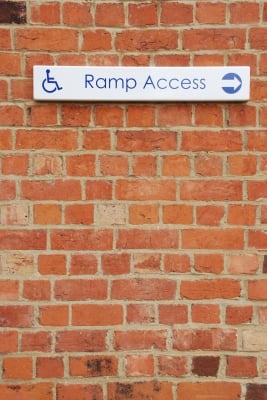Universal design that is accessible for individuals with limited mobility continues to evolve in both the residential and commercial industries as advanced technologies and new design solutions continue to emerge. Optometry Today’s deputy editor Robina Moss recently shared, however, that some spaces still aren’t accessible enough for all.
Moss recounted a recent shopping experience with her mother, who uses a wheelchair. Some stores, she noted, were particularly difficult if not nearly impossible for them to navigate because displays were placed too closely together or aisles were simply too narrow. Point-of-sale displays, she said, were a major hurdle.
“I had to physically move several which blocked our path. With that in mind, it struck me that it is worth thinking about frame displays and store accessibility, as these factors could be costing practices additional business.”
We’d like to think that out of all places, doctors’ offices would be up-to-date on the latest universal design techniques, but as American Medical News reported earlier this year, this is unfortunately not the case. The article cites a report published in Annals of Internal Medicine revealing that up to 22 percent of medical and surgical practices indicated they couldn’t accommodate patients that use wheelchairs, primarily because they are unable to transfer patients to the exam table. Many admitted the buildings were not even accessible for patients in wheelchairs, making it difficult to treat them.
Eyecare practitioners typically don’t use exam tables, but there can still be other issues that can make it difficult to treat wheelchair-bound patients. Many practitioners are aware of this, however, and are taking the proper steps to be more accessible. The report highlighted the fact that ophthalmology practices, for example, are among the practices that usually feature exam equipment that can be adjusted so that the exam can take place while the patient remains in his or her wheelchair. For example, practitioners who use optomap devices have no problems examining patients in wheelchairs, as they are easily accessible for patients of all abilities and ages, from babies to the elderly.
Are you interested in learning more about adding an optomap device to your practice so that you can better serve patients with disabilities? Contact us for more information on how our unique ultra-widefield imaging devices can enhance your practice.
